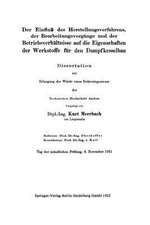Distributed Autonomous Robotic Systems 2
Editat de Hajime Asama, Toshio Fukuda, Tamio Arai, Isao Endoen Limba Engleză Paperback – 2 oct 2013
Preț: 648.24 lei
Preț vechi: 762.64 lei
-15% Nou
Puncte Express: 972
Preț estimativ în valută:
124.04€ • 129.51$ • 102.66£
124.04€ • 129.51$ • 102.66£
Carte tipărită la comandă
Livrare economică 05-19 aprilie
Preluare comenzi: 021 569.72.76
Specificații
ISBN-13: 9784431669449
ISBN-10: 4431669442
Pagini: 456
Ilustrații: XIII, 441 p. 294 illus.
Dimensiuni: 155 x 235 x 24 mm
Greutate: 0.64 kg
Ediția:Softcover reprint of the original 1st ed. 1996
Editura: Springer
Colecția Springer
Locul publicării:Tokyo, Japan
ISBN-10: 4431669442
Pagini: 456
Ilustrații: XIII, 441 p. 294 illus.
Dimensiuni: 155 x 235 x 24 mm
Greutate: 0.64 kg
Ediția:Softcover reprint of the original 1st ed. 1996
Editura: Springer
Colecția Springer
Locul publicării:Tokyo, Japan
Public țintă
Professional/practitionerDescriere
Great interest is now focused on distributed autonomous robotic systems (DARS) as a new strategy for the realization of flexible, robust, and intelligent robots. Inspired by autonomous, decentralized, and self-organizing biological systems, the field of DARS encompasses broad interdisciplinary technologies related not only to robotics and computer engineering but also to biology and psychology. The rapidly growing interest in this new area of research was manifest in the first volume of Distributed Autonomous Robotic Systems, published in 1994. This second volume in the series presents the most recent work by eminent researchers and includes such topics as multirobot control, distributed robotic systems design, self-organizing systems, and sensing and navigation for cooperative robots. Distributed Autonomous Robotic Systems 2 is a valuable source for those whose work involves robotics and will be of great interest to those in the fields of artificial intelligence, self-organizing systems, artificial life, and computer science.
Cuprins
Trends and Perspective of Researches on Control System Theory.- Collective Intelligence in Natural and Artificial Systems.- Reconfiguration Method for a Distributed Mechanical System.- Shock Absorbers and Shock Transformers: Comparing the Collision Behavior of a Mobile Robot Equipped with Different Bumper Types.- Towards a Generic Computer Simulation Platform for Distributed Robotic System Development and Experiments.- Cooperation between a Human Operator and Multiple Robots for Maintenance Tasks at a Distance.- Fast 3D Simulation of Snake Robot Motion.- GMD-Snake: A Semi-Autonomous Snake-like Robot.- Development of a Snake-like Robot-Design Concept and Simulation of a Planar Movement Mode.- Multi-Robot Team Design for Real-World Applications.- An Application Concept of an Underwater Robot Society.- The Modeling of the Team Strategy of Robotic Soccer as a Multi-Agent Robot System.- A Model of Group Choice for Artificial Society.- Distributed Autonomous Formation Control of Mobile Robot Groups by Swarm-Based Pattern Generation.- Affordance in Autonomous Robot; Grounding Mechanism of Sensory Inputs.- Iterative Transportation Planning of Multiple Objects by Cooperative Mobile Robots.- Experimental Characteristics of Multiple-Robots Behaviors in Communication Network Expansion and Object-Fetching.- Managing Different Types of Interactions among Robots.- Amoeba Like Grouping Behavior for Autonomous Robots Using Vibrating Potential Field (Obstacle Avoidance on Uneven Road).- Dissipative Structure Network for Collective Autonomy: Spatial Decomposition of Robotic Group.- Cooperative Acceleration of Task Performance: Foraging Behavior of Interacting Multi-Robots System.- Asynchronous and Synchronous Cooperation; Demonstrated by Deadlock Resolution in a Distributed Robot System.- Cooperative Sweeping in Environments with Movable Obstacles.- Integration of Distributed Sensing Information in DARS based on Evidential Reasoning.- Implementing an Automated Reasoning System for Multi-Robot Cooperation.- Distributed Fail-Safe Structure for Collaborations of Multiple Manipulators.- Multi-Legged Vehicle Based on Mimic-Reactive Architecture.- Adaptability of a Decentralized Kinematic Control Algorithm to Reactive Motion under Microgravity.- Interactive Human-Robot Pole Balancing Utilizing Multiple Viìtual Fuzzy Agents.- Cooperative Operation of Two Mobile Robots.- A New Approach to Multiple Robots’ Behavior Design for Cooperative Object Manipulation.- Robot Behavior and Information System for Multiple Object Handling Robots.- Cooperative Strategy for Multiple Position-controlled Mobile Robots.- Cooperative Navigation among Multiple Mobile Robots.- Self-Localization of Autonomous Mobile Robots Using Intelligent Data Carriers.- Fusion of Range Images and Intensity Images Measured from Multiple View Points.- A Robot Duo for Cooperative Autonomous Navigation.- Appendix Related Research Topics.- Granularity and Scaling in Modularity Design for Manipulator Systems.- Shared Experience Learning on a pair of Autonomous Mobile Robots.- Autonomous Navigation of Mobile Robot by Using Hierarchical Fuzzy Inference and Multi-Sensor Fusion.- Genetic Approach for Autonomous Learning and Structural Evolution.- A Field Communication System for Distributed Autonomous Robots; Investigation of Cooperative Behavior on Messenger Robots Problem.- Power Grasping by Distributed Autonomous Control.- Acquiring Co-operation without Communication by Reinforcement Learning and Dynamics Identification.- BUGS: An Autonomous “Basic UXO Gathering System” Approach in Minefield Countermeasure & UXO Clearance II.- Consideration on Conceptual Design of Inter Robot Communications Network for Mobile Robot System; Concept of Implicit Communication and how to realize with current technology.

















